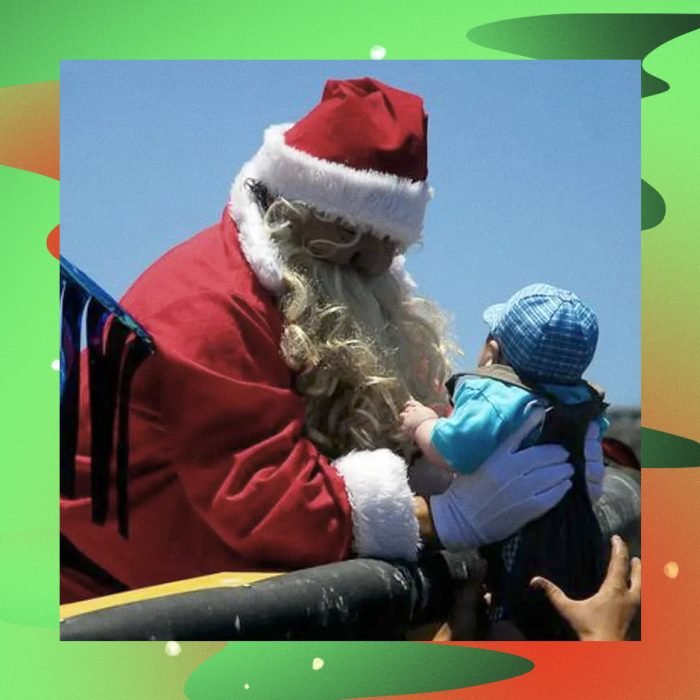
December 25, 2020
Christmas is to Latinos what the Super Bowl is to football fans–the climax of celebration of the thing we love the most, our families. But every country has their own traditions that shift and shape differently when blended with American culture, leading many Latinos in the United States to share many traditions. Tamales, Nochebuena and specialty foods and drinks that are local to individual countries and cultures are often the featured feasts, but one thing rings true throughout–we know the true meaning of Christmas is to find joy within ourselves and our families.
Colombia
Día de las Velitas (Day of Candles) on December 7 is a widely observed holiday tradition in Colombia and is considered the unofficial start of the Christmas season.
Argentina
In addition to the traditional Christmas tree, many Argentineans also decorate their homes with a creche or “pesebre,” which is a Nativity scene. Argentinians also celebrate by lighting fireworks on Nochebuena, and paper lanterns are released into the sky.
Ecuador
Beginning nine days before Christmas, on December 16, the Novena de Navidad consists of nine days of singing around the Nativity scene. There’s even a guide for the specific structure of song and prayer. It’s popular in Colombia as well to round out the velitas celebrations.
Mexico
Posadas is a festival celebrated daily for nine nights, to represent the journey Joseph and Mary took on their way to the manger where Christ was born. Posadas are staple in many Mexican towns, and have been carried over to the United States where cities like Los Angeles, have annual posadas. Also from Mexico–the Poinsettia, a flower native to Mexico and known as “Taxco del Alarcon.”
Guatemala
Navidad is Guatemala is largely religious, and celebrations can begin as early as December 7th, a day known as Quema del Diablo “burning of the devil”. This is a religious celebration where Guatemalans put up bonfires on the streets and even burn Piñatas shaped as little devils. Posadas are also celebrated in Guatemala, much like in Mexico.
Dominican Republic
One of the longest-standing Christmas traditions is to clean out the old and ‘start the new year fresh and clean’ to ensure good luck for the household. This prepares everyone to ring in the new year with a brand new clean slate. Nochebuena is a huge night for Dominicanos, and traditional food and drinks, while participating in Aguinaldos–which is caroling, but in the morning.
Cuba
Christmas was outlawed by the Castro regime for close to 30 years (1969-1997), so traditions are a mix and fairly new to many. Nochebuena is celebrated, but the emphasis is on family and food. The Cuban town of Remedios is transformed from Dec 16-26 from a quiet place into a full-blown party town during the festivities known as “Las Parrandas de Remedios,” one of the oldest fiestas in Cuba.
Panama
In Panama, turkey is prepared with local spices and minced vegetables and is served with other traditional foods like tamales, potato salad and ham. The food is accompanied with ponche de ron, their version of a rum-spiked eggnog.
Belize
During the Christmas Bram, participants sing, dance and play instruments through the neighborhood. In another tradition, Jankunu dancers put on a performance that celebrates the country’s freedom from slavery.
Honduras
Christmas is considered one of Honduras’ biggest holidays with several traditions (including Nochebuena). One of them is a tradition that everyone in the family should have their “estreno” on this day. This means, everyone should have new clothes to wear. This tradition can be interchangeable with New Years Eve. It is a good omen when everyone in the family has an “estreno” to wear.people sign up to host the churchgoers participating in the posadas.
El Salvador
Christmas is celebrated in much the same way as other Central American countries, with posadas, food and drinks. However, El Salvador likes to light up their holiday skies with fireworks, a tradition that has seeped into Chicano culture in Los Angeles, as well.
Peru
Nacimientos (Nativity scenes) are taken seriously in Peru (just ask my abuela!). One family member is chosen to finally put the baby Jesus figure into the tiny manger that’s part of what Peruvians call pesebres. Peruvians also take some time to enjoy panettone, a sweet bread full of candied fruits.
Bolivia
The procession of the baby Jesus is full of singing and dancing as it finally makes its way into the church. People will then stay awake to attend midnight mass on Christmas, before continuing the festivities at their own home, meaning the Christmas celebration in Bolivia literally goes all night.
Uruguay
Christmas in Uruguay goes by another name, “Day of the Family.” It is common to make an “asado,” a barbecue of various cuts of different meats, cheese and vegetables cooked over a lovingly tended parrilla, or grill, lit by pine cones and wood.
Chile
In Chile, they call Santa Claus Papa Noel or Viejito Pascuero, which literally translates as “Old Man Christmas.” They also call Christmas, Pascua and eat a “pan de pascua,” and drink “Cola de Mono” which is a chilled drink (December in Chile is Summertime) that uses delicious Christmas-y flavors. The recipe includes coffee, milk, sugar, cloves and aguardiente–a fiery Chilean liquor.
Nicaragua
On December 7, Nicaraguans celebrate “La gritería” to honor “La Purisima,” the purest and Immaculate Conception of Mary. This is a boisterous tradition paying homage to The Virgin Mary. For this event, thousands of people in the country, especially children, go from house to house singing Christmas hymns and carols of the Virgin Mary. The houses where the carolers perform rewards such singing and praises by offering treats like rosquillas (doughnuts), leche de burra (a candy called donkey’s milk), oranges and other sweets.
Brazil
Many Brazilian Christmas traditions come from Portugal as Portugal ruled Brazil for many years. Nativity scenes, known as Presépio, are very popular. They are set-up in churches and homes all through December. Christmas plays called ‘Os Pastores’ (The Shepherds), like the plays in Mexico, are also popular. Working Brazilians also receive a mandatory “Christmas Bonus” (also known in Brazil as the Thirteenth Salary), calculated as the salary earned by the employee in December.
Costa Rica
Ticos also get to enjoy a holiday bonus. Every worker in Costa Rica has the legal right to receive an additional month of wages paid by the Employer as a year end Christmas Bonus without any conditions. The bonus must be paid by the employer between December 1 and the 20th.
Puerto Rico
Many Puerto Ricans will attend a midnight mass known as Misa de Gallo (Mass of the Rooster). In Puerto Rico, like most Latin American countries, the big holiday celebration is held on Nochebuena. Family and friends get together for festivities and traditional foods of lechón asado, coquito, and pasteles. The pig roasts consists of holiday music, cooking of side dishes and overall party vibes. The celebration and gift giving then continues until Three Kings Day, or Dia de Los Reyes.
Venezuela
Traditionally, Santa Claus is replaced by the Baby Jesus in Venezuela. And yes, they too enjoy Nochebuena (honestly–if you don’t, you are missing out!). But they also enjoy traditional holiday meals like “hallacas,” “pan de jamón” and “dulce de lechoza.”
Paraguay
Christmas in Paraguay is very religious. The holiday sees flowers being used extensively in church and home decorations. On Christmas Eve, church bells summon the people to church at midnight for La Misa Del Gallo or the Mass of the Rooster. The Christmas feasting begins when family and friends return home from Mass, when the Christmas Eve tradition sends children from house to house to set off fireworks, listen to Paraguayan polka and drink clericó, a unique fruit punch.
Share This Article
